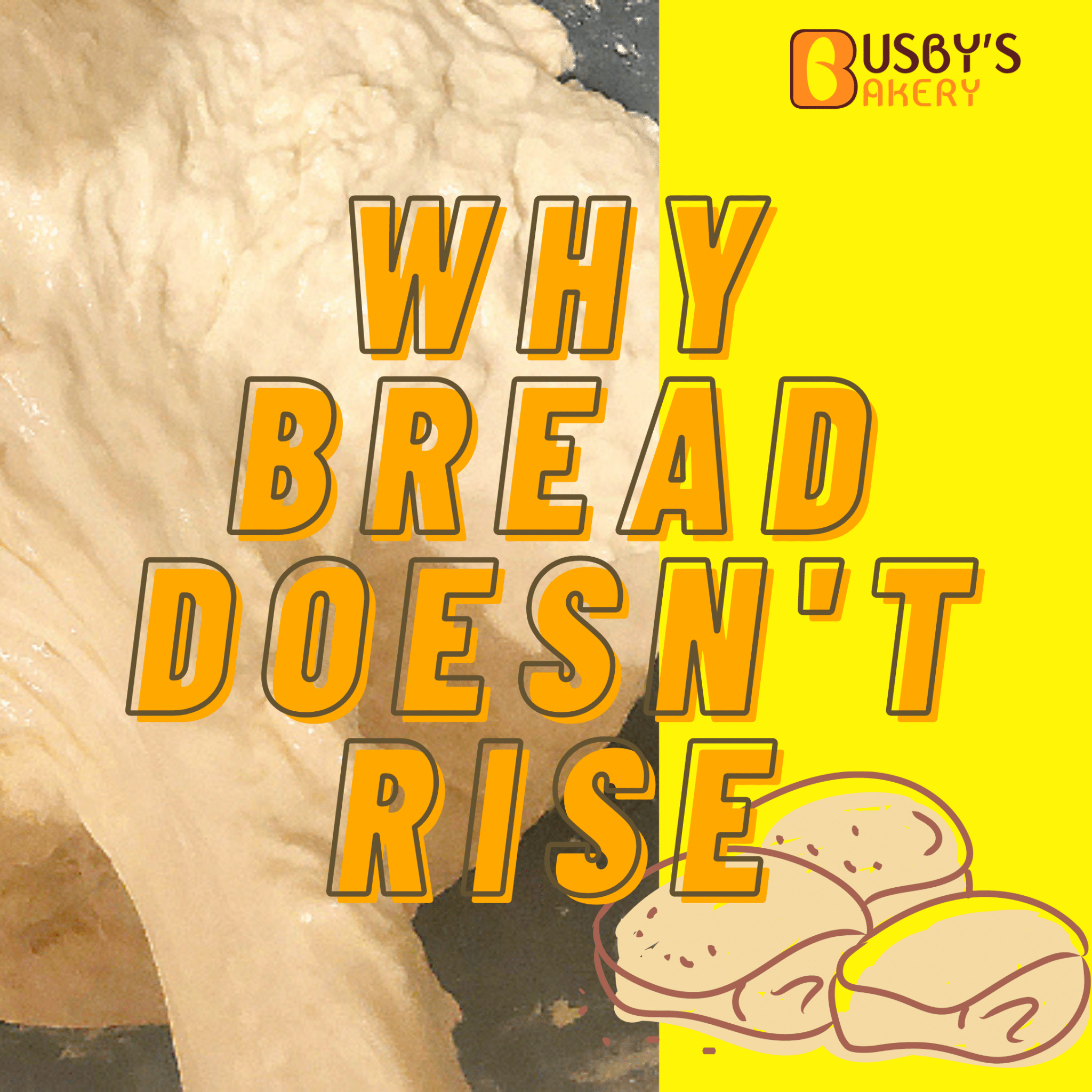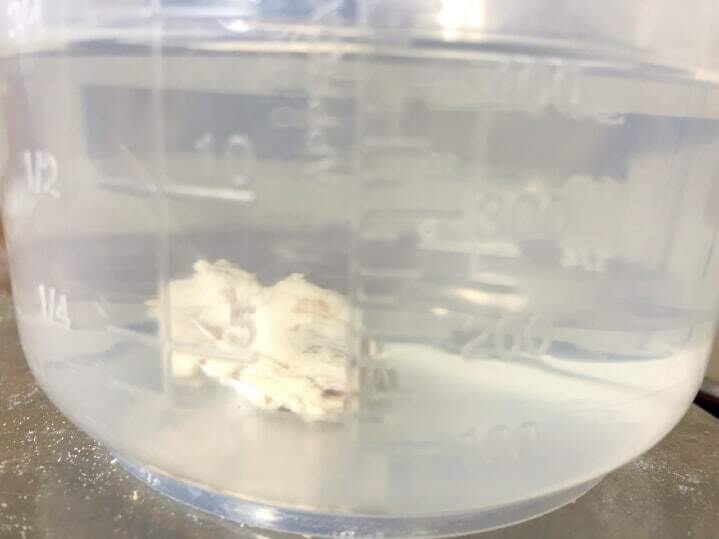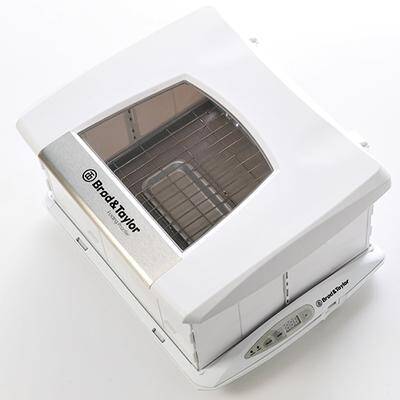Can You Use Dough That Has Not Risen
In this article we are going to cover the 13 reasons why bread doesn't rise so you can make fantastic bread at home every time.
I've been there…

You put all your passion and time into making the (what you think) perfect loaf and sadly discover that it doesn't rise. Disaster. Sometimes you can give a dough all the proof time you can, but it simply will not rise.
The 7 Things You're (Probably) Doing Wrong!
Improve Your Baking Skills With My Free Email Course- Sign Up Here!
Well have no fear, we've all had a few stinkers!
After reading this article you will know the most common reasons why bread doesn't rise and also discover many ways to improve your rise.
When I first started baking I went straight into a commercial bakery. The recipes were laid out for me, the equipment was amazing, the water tank forced me to probe the flour before it would release the water, the proofer was set at a constant temperature…
It was pretty easy really.
The reason was there were very few variables. The ingredients were the same, the recipe's were measured out, the environment was controlled and the equipment was the always constant.
Hey there! Some links on this page are affiliate links which means that, if you choose to make a purchase, I may earn a small commission at no extra cost to you. I greatly appreciate your support and I hope you enjoy the article!
When we bake at home it's not that easy!
We have to adjust our recipes so we can make bread that's the same as the recipe's photo. It's a challenge which many novice bakers put on themselves and some hit a home run at the first occasion, some suffer defeat time and time again before they succeed.
By expanding your knowledge you can learn how to eradicate the issues in your bread so that you can start hitting those grand slams!
It doesn't matter about cheese stuffings, einkorn flour or stretch and folds if the bread simply won't rise, so let's go through the most common reasons why your bread is not coming up to the top of the tin.
Didn't put the yeast in
Let's start with the basics. Back as a bakery manager I had many bakers insist that they had put the yeast in the mixing bowl to later find it weighed on the table behind.
It's a silly mistake but it happens more than you might think.
How do you tell?
If the yeast is in the dough you should feel some gassiness in it. If not, give it a smell, the aroma of the yeast should be noticeable
If you are still not sure tear a piece of dough and put it in a jug of water and place it in the microwave. As it warms the dough should rise to the surface. If the dough doesn't then the yeast has been forgotten or is out of date.

If it's a short ferment you will need to restart it, you could reuse a portion of the dough to the fresh mix. It'll aid the doughs maturity and give a better gluten structure.
If the bread has a long fermentation time ahead of it (over 8 hours) you'll probably be ok chucking it in afterwards.
The yeast is out of date
Yeast does have an expiry date. If you follow the guidelines on the packet, most brands of dried yeast should be used within 3 days of opening.
I know, it's silly right? Dried yeast will keep for months if kept in the fridge and the fresh version lasts around a week. This depends on how fresh the yeast was when you got it and how much you have of it. A large block keeps fresh for longer than a a handful of crumbs.

How to tell if your yeast is passed it's best
Fresh yeast will start to dry out and you will see it turning a dark, nearly charcoal colour in places. You can still use it when it gets to this stage, but it's not as effective. It's worth adding a little more or allowing more time for the dough to ferment.
After the yeast arrives at the dark charcoal colour it will start to dry out and harden. At this point it should not be used.
If you are unsure if your dried yeast is still usable, take a small bowl of warm water and add a teaspoon of yeast to it. If it froths up after 5-10 minutes it's good.
If not then it's best to get another packet.
The water was too warm and killed the yeast
Many recipes request warm water to be used for activating the yeast. The temperature of this warm water should be 30-35 C (86-95F).
If the water temperature is above this, the yeast activity reduces until it hits around 60C (140F) where the yeast is permanently deactivated.
Sourdough wasn't active enough
A sourdough starter should have nice strong bubbles running through it and fed at 12 hour intervals. You can get around the twice a day feedings by leaving it in the fridge, google the shavings technique. However if using the fridge method the starter should still be strong and often fed to keep it active.
If this is not the case it will take a long time for the bread to rise which will most likely cause high amounts of lactic acid to develop during fermentation. Excessive lactic acid destroys the doughs ability to hold its shape.
This is also the main cause of Frisbee style bread.
Relying on the oven spring to do too much of the rise
Oven spring gives the bread a lift of around 10-20% of it's pre-oven size. Oven spring is not responsible for rising the bread. The bread should be almost, if not at full size when it goes into the oven.
Putting the bread in too early will cause the bread to shoot up more than 20% but this often creates unwanted holes, ripped crusts and tunnelling in the crumb.
The dough was too cold
Yeast doesn't need oxygen to ferment the dough but it does need a bit of warmth. Cold kitchens and cold ingredients slow the rate in which the dough fermentation occurs, causing bread to rise very slowly.
To remedy this, use a proofer such as this one:

Check price at Brod & Taylor or Amazon
And control your final dough temperature using a thermometer so that you can get a grip on your rising.
Here's an article that explains how to do this:
Further reading: Desired Dough Temperature
The dough needed to rise for longer
Sometimes the dough just needs longer than the recipe states to rise. With any bread recipe, it is best to watch the dough more than the time.
Different ingredients and environments create different results, it's the magic of bread making, whilst also the challenge.
Learning how the dough should feel and look like at the end of each stage of bread making is the most powerful skill in baking bread.
Too much salt was added
Salt inhibits the yeast which slows dough the production of gas. This is great for supporting the gluten structure though too much salt can stop the dough from rising.
How to tell if you are using too much salt
Most recipes call for the amount of salt to be at around 2% of the weight of the flour. The 2% also includes any other salted additions such as butter and olives. Sometimes by accident, the salt gets added twice or misread the recipe.
The only way to tell if too much salt is first to check the recipe has a maximum of 2.5% (pizza recipes can go up to 3%) salt. If that looks OK, taste a piece of the raw dough.
The salt should be available to the palette but not overpowering.
There was too much fat added to the dough
Fats lubricate the gluten found in the flour and prevents the development of strong, flexible strands of gluten. The addition of large amounts of fat at the start of mixing creates a tighter and more ridged gluten structure which fails to expand during proofing.
Adding fat during mixing often leads to dense bread. It is best to delay the addition of fats to near the end of mixing, after the gluten has developed a little bit.
It is a challenge to do this as fats contain liquid which is needed to hydrate the flour but try and include as much fat as possible after the gluten has had time to develop.
The water contains too much chlorine
Sometimes chlorine or other agents used to clean the water are at high levels which destroys yeast or sourdough activity. It is uncommon but a switch to bottled water may improve the rise of your bread.
You can check with your local water board to see if they can give you any information on the quality of your water, they are expected to provide these details if requested.
Bulk fermentation was not effective
For a good rise, the flour must be mature. This is created by the action of the levain and the conditioning of the flour. Organics and lactic acids mature the dough while hydrated flour breaks down to present starches and gluten to the dough.
Bread needs long, strong and elastic gluten to be able to retain gas as it rises. Without a good gluten stricture, the bread will not rise to its full potential.

Bread made at a warm fermentation temperature will rise fast and therefore lose out on a bit of dough maturity.
Further reading: dough fermentation process
For the best rise, a long bulk ferment or an autolyse should be conducted to develop the flour. To do this small amounts of yeast, cool temperatures and a bit of time are needed.
Prefermented flour
Alternatively to autolyse and long bulk fermentation, the use of prefermented flour in the form of biga, poolish, pâte fermentée or a sourdough levain can be used. Instead of maturing the flour in the dough, preferments introduce previously mature flour to the mix.
These additions create different properties to long bulk fermentation in the breads. They must be ripe when added for the dough to gain the maximum benefit of their inclusion.
Further to this, you might want to read the what is a levain post.
The dough became hard during final proofing
As dough comes into contact with air it dries up which builds a strong, dry layer on the outside of the dough. This barrier is called a skin. It becomes so strong that the dough cannot rise up anymore. We prevent the dough "skining up" by covering the dough with a bag or sealed container. It can also cause the bread to expand at the bottom of the loaf.
Commercial bakery's often have proofers which add humidity as well as heat but for the majority of home bakers a bag, box or overturned mixing bowl are commonly used.
The oven set up
Improve the oven set up for baking bread will help turbo charge your baking. It's not likely to cure flat bread issuse on it's own but it will help to give your bread a more proffessional appearance.

Using a preheated baking stone is pretty much a must if you are baking bread. It will help your bread to spring up in the oven which is called oven spring.
For crusty bread and a higher rise in the oven, adding water is required. The how to add steam to an oven for bread article explains how to do this correctly. The addition of steam delays the setting of the crust to allow the bread to rise further.
Solving the issue
The reason that a bread might not rise can be down to many things and often a combination of the errors shown above. The way I eradicate issues in my bread is starting with the dough.
The two questions I ask first are:
- Is the levain active?
- Is the dough matured with a nice gluten structure?
Then I can look at whether the dough is proofed correctly before it goes into the oven. The oven side of things comes last. The oven won't stop a bread coming out flat but getting the conditions correct to gain a nice oven spring will make a difference in the rise.
Can You Use Dough That Has Not Risen
Source: https://www.busbysbakery.com/reasons-why-my-bread-didnt-rise/
0 Response to "Can You Use Dough That Has Not Risen"
Post a Comment